Potash
Studing demand and invite to long-term cooperation for implementation to market scandinavian the following high-guality
Products
- The products are Standard MOP (pink and white), Granular MOP (pink and white), all the technical (K2O content 62% min) and agricultural (K2O content 60% min)
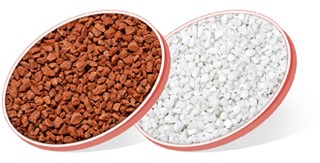
Granular Muriate of Potash
Granular MOP is applied directly as a basic nutrient for agricultural crops. It is also a component to mixed nitrogen-phosphorus-potash fertilizers.
- Pink Granular Muriate of Potash (K2O-60% min)
- Pink Granular-Fine Muriate of Potash (K2O-60% min)
- White Granular Muriate of Potash (K2O-60% min)
- White Granular-Fine Muriate of Potash (K2O-60% min)
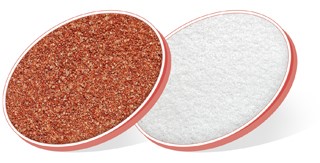
Fine Muriate of potash
Fine MOP is used as a feedstock to manufacture complex mineral fertilizers for agriculture. In some parts of the globe, fine MOP is applied directly to the soil as a single nutrient fertilizer. It is also used to manufacture granular MOP.
- Pink Standard Muriate of Potash (K2O-60% min) PSt60
- White Fine Muriate of Potash (K2O-60% min)
- White Standard Muriate of Potash, Grade O
- White 62% Mix Muriate of Potash
- White 60% Mix Muriate of Potash
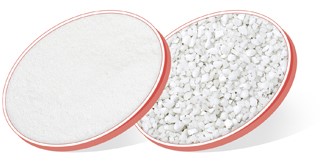
Technical Muriate of Potash
Technical MOP is used in metallurgy, biotechnology, chemical, petrochemical, food, pharmaceutical, perfumes and cosmetics industries etc.
- White Fine Technical Muriate of Potash (K2O-62% min)
- White Standard Technical Muriate of Potash dust-free (K2O-62% min)
- White Granular Technical Muriate of Potash, Grade A (K2O-62% min)
- White Granular Technical Muriate of Potash, Grade B (K2O-62% min)
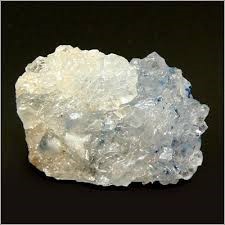
POTASH FÖR LIVE
The role of potash in the vital functions of plants is versatile. It’s a sine qua non for all plants, microorganisms, animals and man. Potash uptake is largely a function of its content in soil, mobility and availability to plants.
With potash being involved in protein synthesis, its optimal level in human blood serum ensures the sustainability of vital functions, such as nervous impulses and heart rate. Human daily requirement of potash is at least 2g, uptake for hypertensive patients is higher at up to 3.5g.
The requirement for potassium by animals is in the range of 5 to 7 grams, beef cattle needs up to 10g of potash per 1g of ration dry matter. Potash salts are required to support normal function of heart and other organs; they help remove excessive body fluid.
Deficient potash causes muscular weakness, may induce brain dysfunction, cardiac arrhythmia, and can lead to impaired growth in children. Insufficient potash levels in animals cause the loss of appetite, diminished potash content in blood and milk, heart and kidney malfunction.
Industrial Uses Potash
- Technical muriate of potash is used for oil well drilling in the petrochemical industry.
- Potassium borofluoride is used in metallurgy for steel and base metal soldering.
- Potassium hydroxide is in routine use in the manufacture of soaps, detergents, lubricants, catalysts, matches, dyes, alkaline batteries, and in film processing.
- Potassium carbonate is used in the production of optical lenses, glasses, crystals, dishware, porcelain ware, in glass melting, and as a feed additive.
- Potassium bicarbonate is used in food and pharmaceutical industry.
- Various potassium containing substances are in general use in healthcare as antiseptics, and as a calmative for the nervous system.
- Potassium compounds are also common in the manufacture of bleaching agents, baking powder, gunpowder, illuminating charges, explosives, in electroplating, for extraction of some elements from minerals, in laser technology, fish salting, and steel quenching
POTASH FOR PLANTS
The role of potash in the vital functions of plants is versatile. It’s a sine qua non for all plants, microorganisms, animals and man. Potash uptake is largely a function of its content in soil, mobility and availability to plants.
The physiological role of potash manifests itself in supporting favourable (for the proper function of a cell) physical and chemical properties of protoplasm helping maintain normal metabolism. Potash helps better absorption of nitrogen by plants thus preventing environmental pollution.
Potash participates in the formation of plant cell walls, thickens cell walls, rendering plants more resistant to lodging. Harder cell walls serve to increase resistance to agricultural pests and diseases. Lower potash content in plants is conducive to pest and bacteria infestation of plant tissue. Plants receiving much potash show better resistance to pathogens.
Potash regulates water intake.Plants well-supplied with potash take in less soil water and are more resistant to drought. Potash fertilizers work drastically better when plants get enough water, therefore in areas with intensive irrigation they use significantly less water in agriculture.
As winter comes, plants well-supplied with potash appear to be more robust and with a better developed rootage. Potash enhances plants’ winter-hardiness and their resistance to spring and autumn frosts.
Potash deficiency arrests plant development resulting in nutritional disorders, diminished crop performance and poorer quality yields.
Sufficient application of potash
- Activates ferments which take part in the metabolism of nitrogen, and increases proteins in wheat, barley, rice and in the seeds of pulse crops.
- Potash stimulates the accumulation of the vegetative mass.
- Potash promotes the accumulation of fat in the seeds of sunflower, rapeseed, fruits of palm and olive trees and other oil crops.
- Helps increase sugars, vitamin C, B1, carotene, organic acids
- Improves taste, colour and pulp consistency of berries and fruit.
- Potash strengthens and lengthens fiber in cotton, flax and other technical crops plants.
- Potash fertilizers curb by 1.5-1.7 times the accumulation of 137Cs in plants grown on soils contaminated with radionuclide.
- .… and this is not the whole story.
POTASH FOR NATUR
Potash is, alongside with nitrogen and phosphorus, one of the primary plant nutrients. Potash is not found in any organic compound, but is present in mineral ionic form as soluble salts of cell fluids. Potash is absorbed by plants in significantly larger quantities than any other nutrient.
Potash occurs naturally as a constituent of oxidized salts and siliceous mineral compounds. Various types of soil contain from 0.5 to 3 per cent of potash. The average potash content in soil is close to 1.36%. However, most potash present in soil comes in a form unavailable to plants. Exceptions to this are water soluble potash compounds (nitrates, phosphates, sulfates, chlorides, carbonates) which are found in soil solution. They are available to plants, but exist only in small quantities.
Potash is an essential and irreplaceable element, and is a prerequisite for normal crop growth. It’s a crucial part of many physiological and biochemical processes in plants triggering over 60 ferments active in plant metabolism.
Potash is proactive in photosynthesis, boosts vegetative growth and supports the formation of high energy compounds (ATP) which provide energy for the processes of synthesis occurring in plants. The assimilation of carbon dioxide and the synthesis of starch, sugars and proteins in plant foliage are dependent on ATP supply.
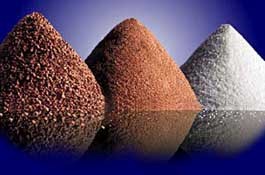
GUALITY STANDARDS
The enterprise also holds the ISO 14000 certificate proving that its environment management system meets the international environment protection standards. Such a certificate proves that the production process has been put in line with international environment protection guidelines and has no adverse environmental impact.
